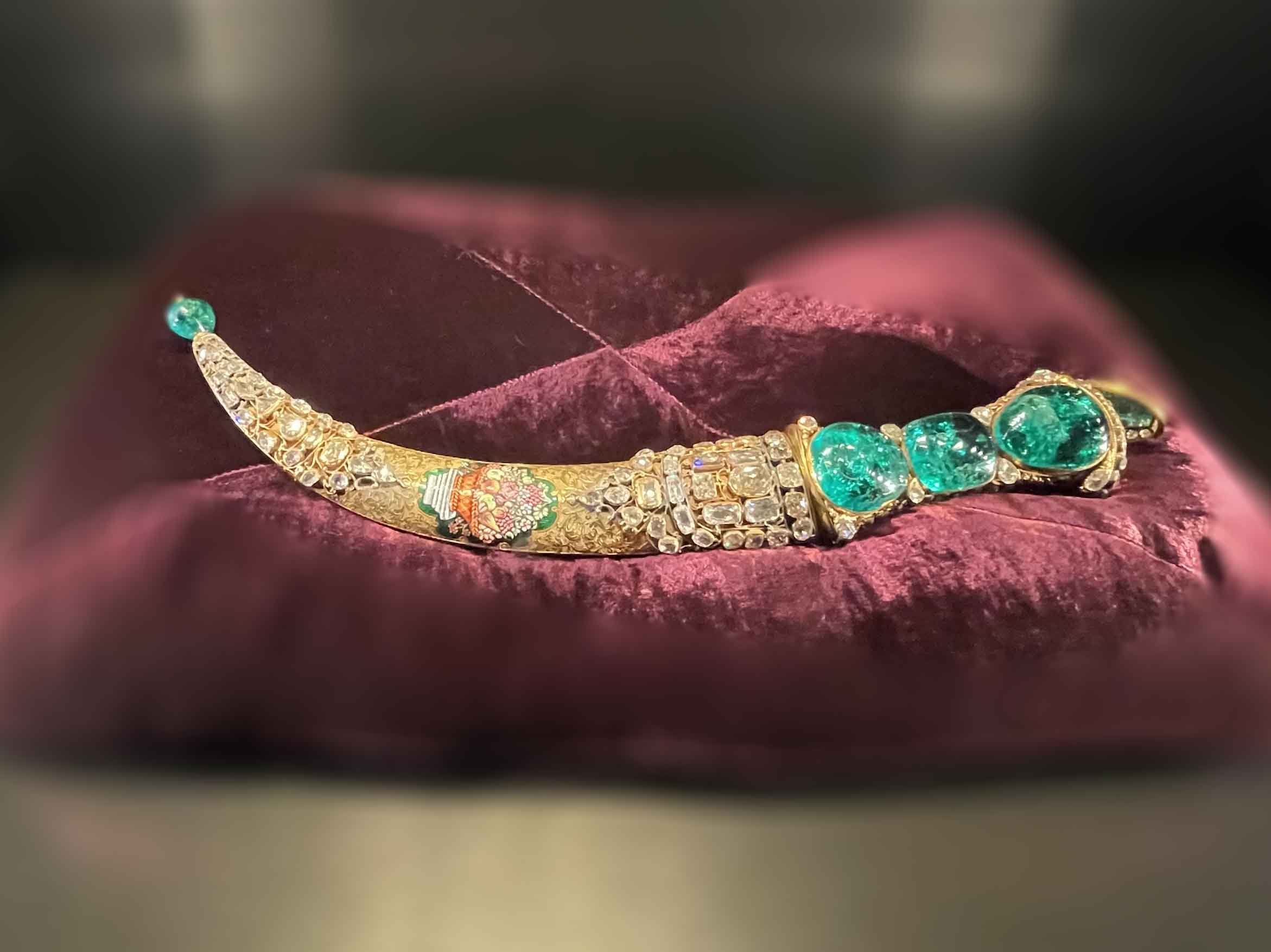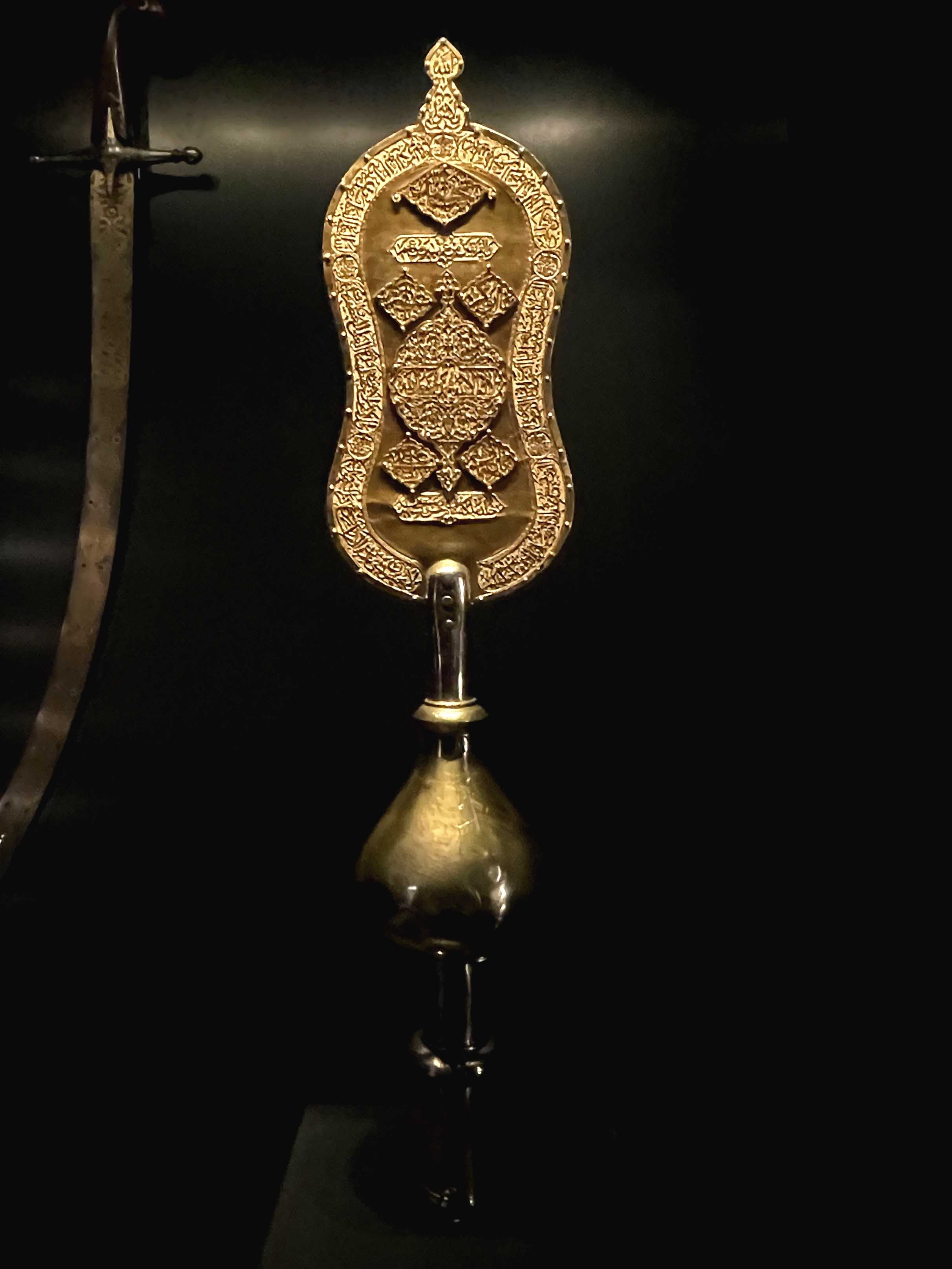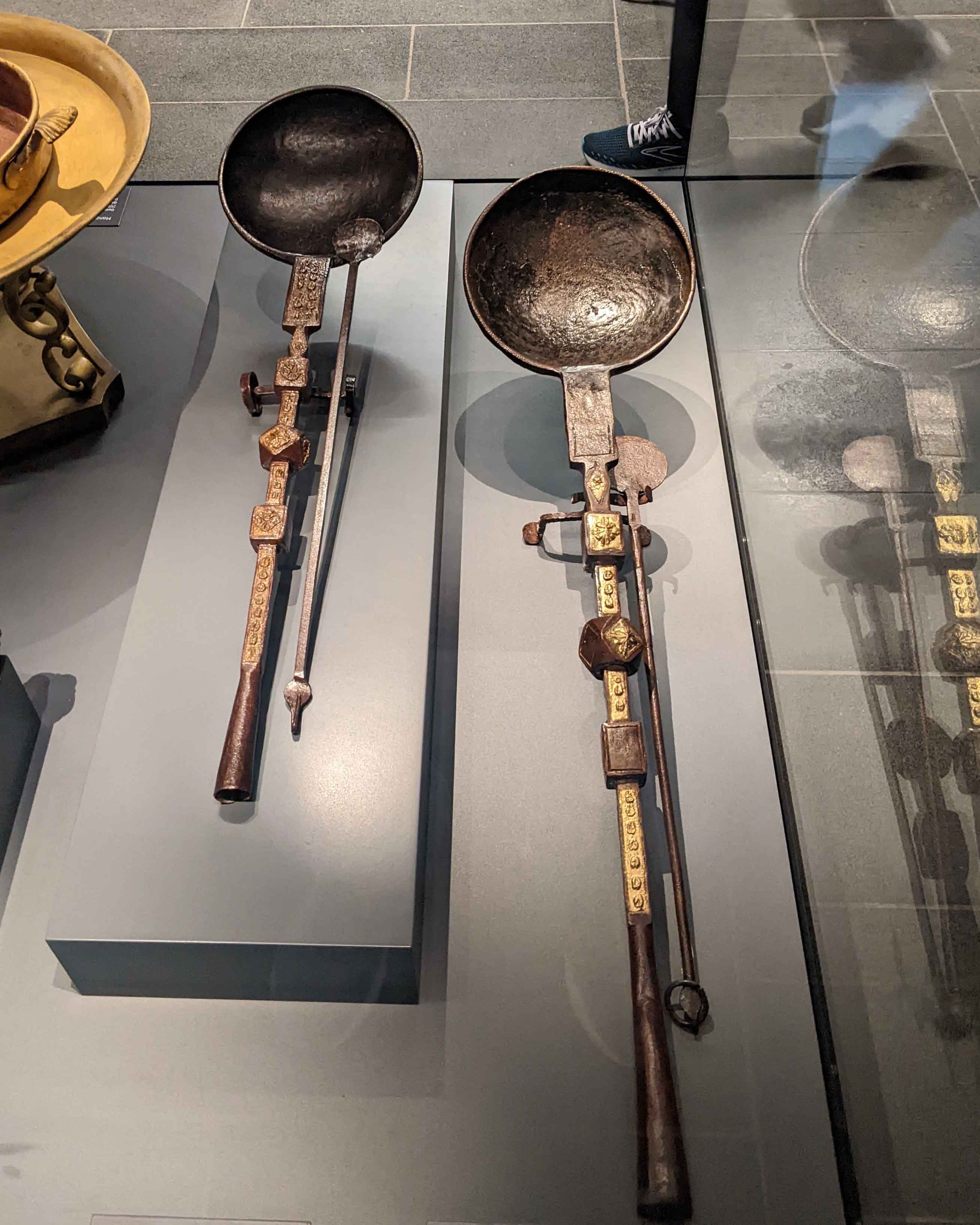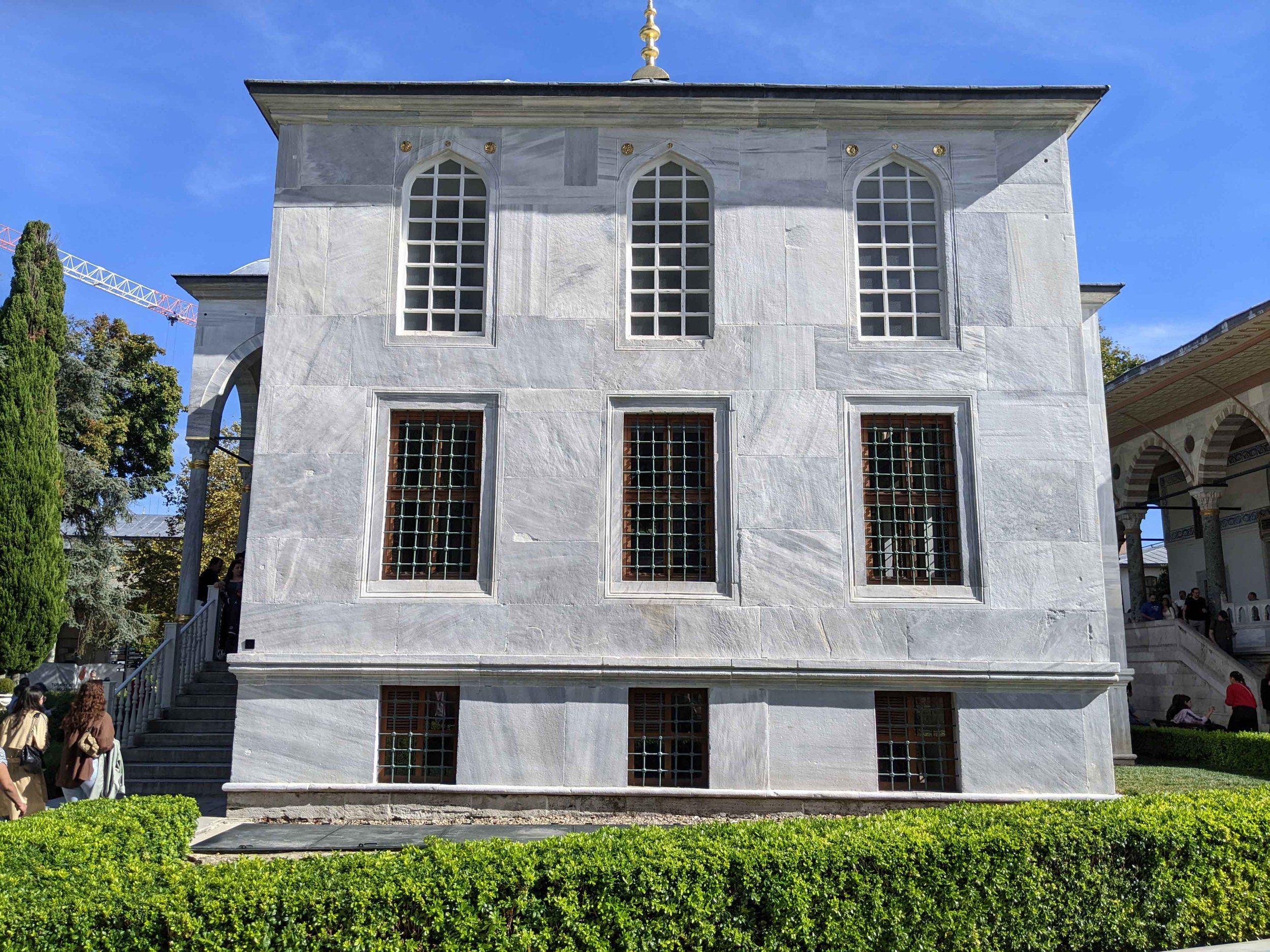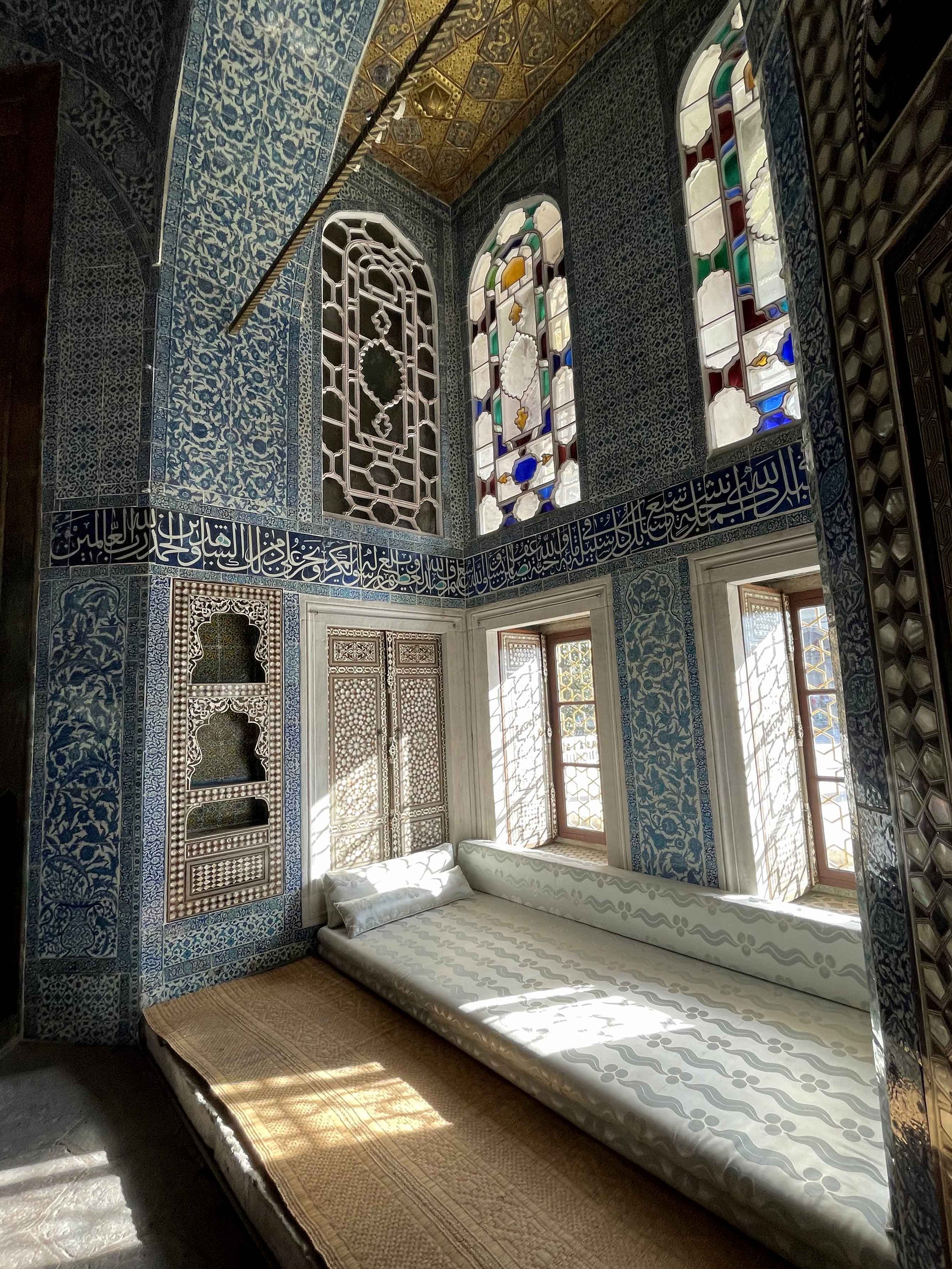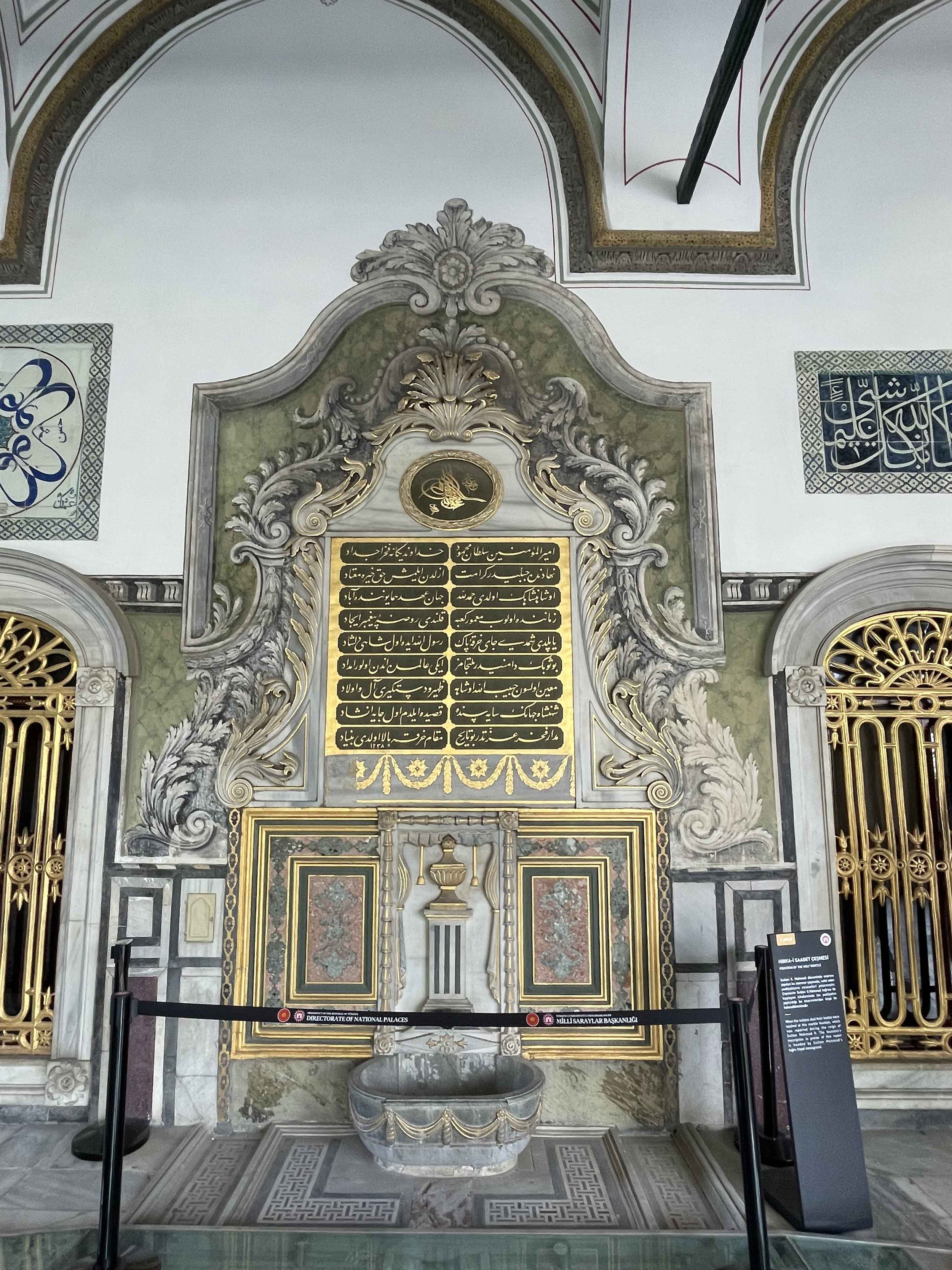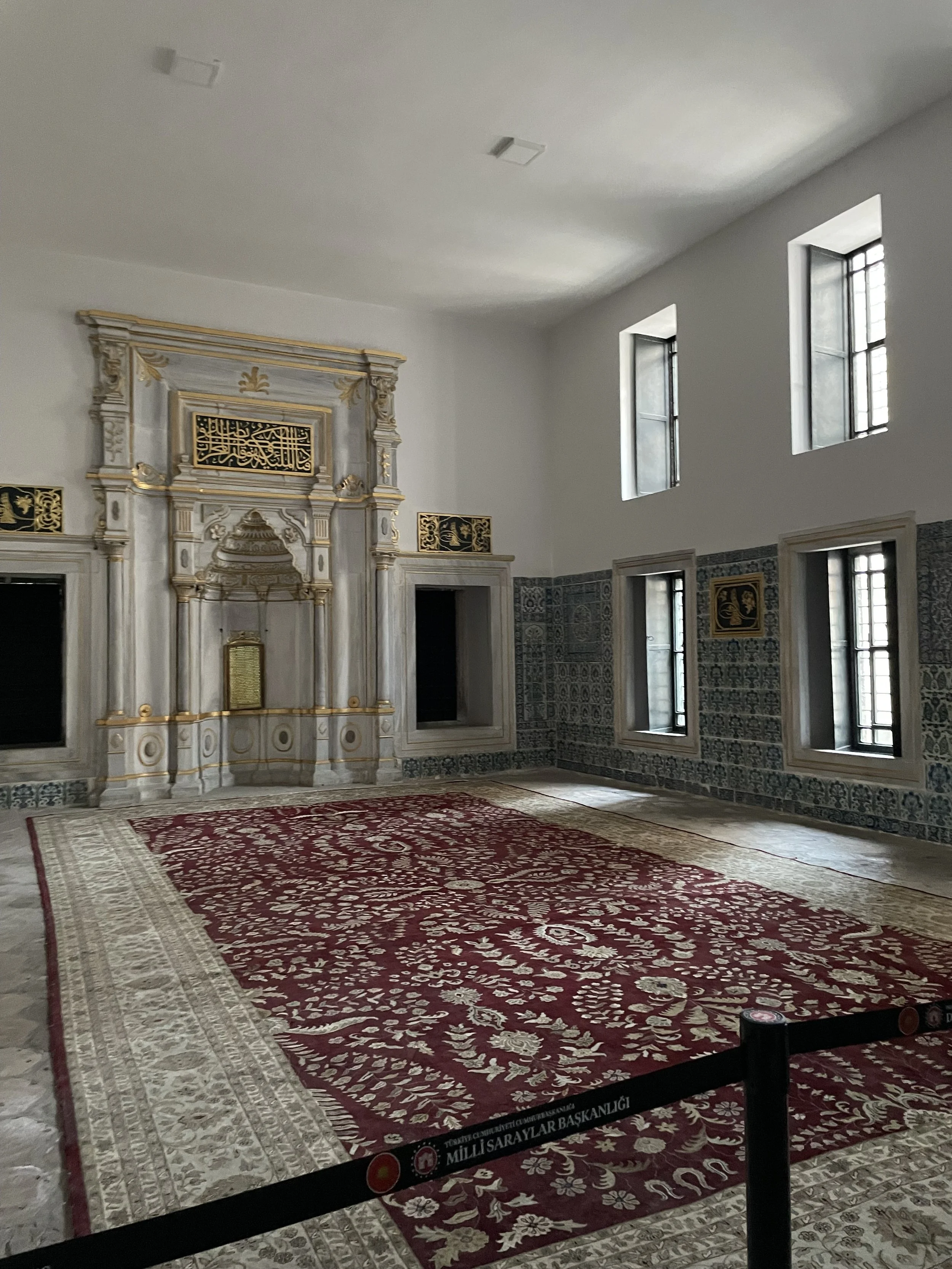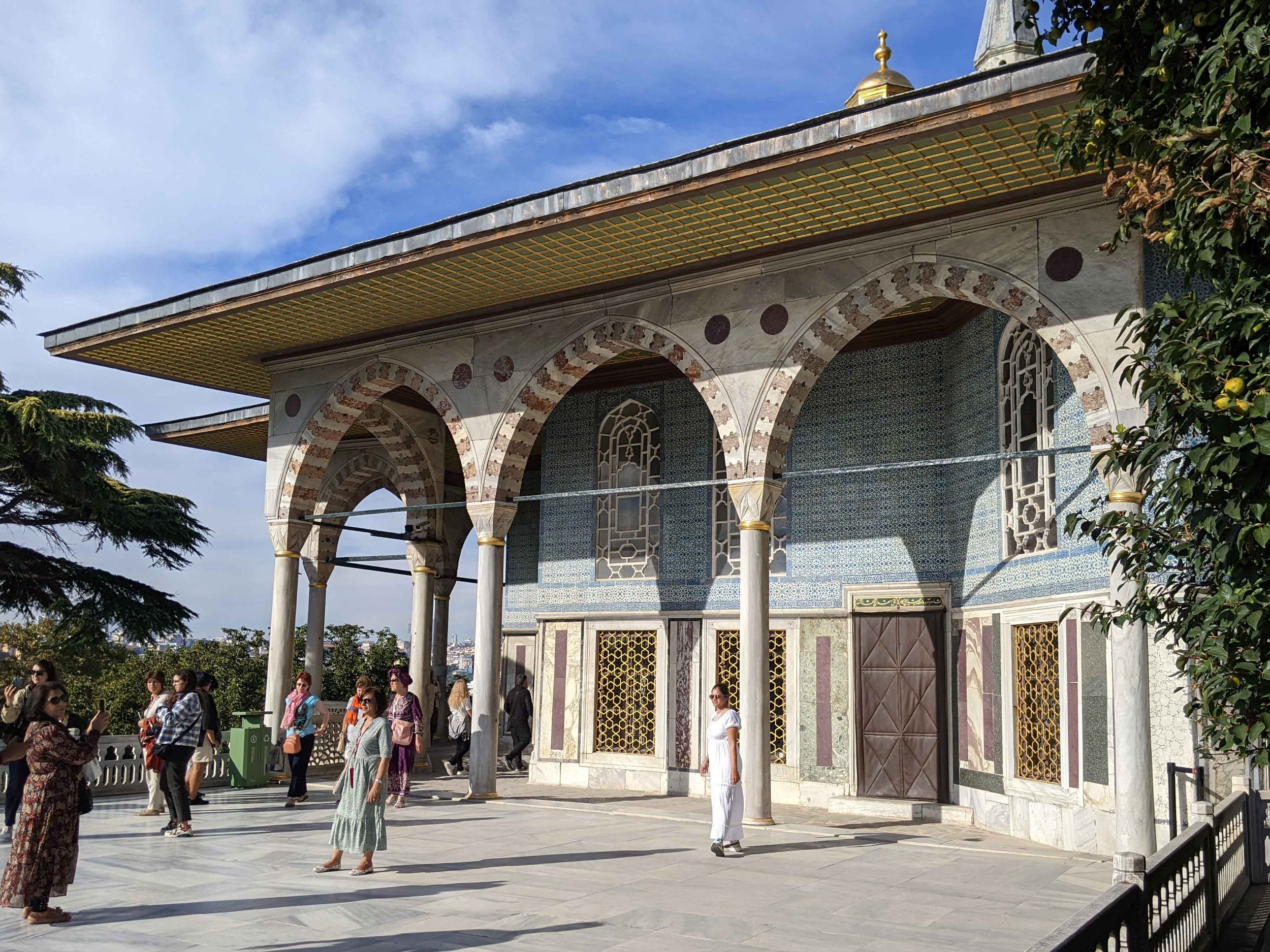I feel that the best part of Istanbul’s historical sites is that they seemed to be concentrated in pockets. You catch a tram to one location and chances are that you will be able to see a handful of places in a single visit. The pre-Covid hustle and bustle of tourist is back, which makes for a lively environment but unfortunately, also increases the chance of getting photobombed.
When we visited, a number of sites were partially closed to the public because of restoration works, luckily Topkapi Palace was open.
Topkapı Palace (literally translated as ‘Cannon gate palace’) was built by Sultan Mehmed II during the 14th century and is located in the historic peninsula bounded by the Marmara Sea, the Bosphorus Strait, and the Golden Horn inlet.
The palace remained the sultan’s main residence and center of government until the mid-19th century, after which the official residence was shifted to Dolmabahçe Palace. It was converted into a museum in 1924 when Turkey became a republic.
Spread over an area of 350,000m2, this palace, with its historic buildings, collections, and nearly 300,000 archive documents, is considered one of the largest museum palaces in the world.
THE MUSEUM
The museum houses one of the best collections of royal and extravagant European, Chinese, and Japanese porcelain and glassware. They are also displays of the Sultan’s kitchen and the utensils used to prepare food and feed the army of people working at the palace.
Coffee culture existed at the Ottoman palace and continued in the traditional manner during the 19th century. The museum has a whole section dedicated to this facet of palace life. Coffee was presented to the Sultan and his guest in special ceremonies featuring specially trained staff and utensils.
In the harem, coffee was served by female attendants known as’ kahveci kalfa’ trained in the rituals of its presentation. One of the attendants carried the velvet or satin cloth adorned with gold thread, pearls, or diamonds, and others the jeweled cups and holders on a gold or silver tray. A third brought the coffee jug on its chafing dish, where it was kept hot by embers, and a fourth filled the cups, placed each in a holder, and offered them to the guests.
Wouldn’t it be nice, to have coffee served with similar pomp and glory at the local Starbucks instead of the usual frowned-faced attendants?
The weapons collection at the Topkapi Palace Museum is one of the richest and most diverse collections in the world. It comprises of thousands of weapons of various origins such as Indian, Arab, Turkish, Persian, Mamluk, Abbasid, European, Japanese, Crimean Tartar, and Umayyad. Spanning over 1,300 years, the collection consists of weapons that were transferred from the armies and those that were used by the palace guards.
THE HOLY RELICS
Outside the Library building in the centre of the third courtyard, we found a long queue of people that seemed to be moving at a snail’s pace. People from all over the world, Muslims, and non-Muslims flocked outside this ‘Has Oda’ or the chamber of the holy relics to view the most precious relics of the Islamic world. Note, only limited visitors are allowed to enter the chamber at a time, and women are required to cover their heads with a scarf before entering the chambers.
The Ottomans collected the Holy Relics attributed to the prophets from all over the empire and brought them to Istanbul for safekeeping. It is said that the Ottoman sultans wanted to keep the Holy Relics close to themselves because they thought that the location of the relics would qualify Istanbul as the centre of the Islamic world.
Each of the relics is highly prized and has its own history/mythology and was collected over generations and kept inside mosques and ancient monasteries. Among this collection are the Holy Mantle, the bow, and the sword of the Prophet Mohammad (peace be upon him). There are also holy relics attributed to other prophets such as the staff of Moses; the sword of David; the robe of Joseph; and the swords of the Prophet Muhammad’s companions.
The collection is housed in the Privy Chamber, where the sultan lived and kept his throne. It is said that, prior to their accession to the throne, the sultans would come to this room to pray and receive homage from the Privy Room officials before leaving for the ceremony. Even now, an imam inside a glassed-off chamber recites the Koran around the clock.
LIBRARY
What wouldn’t I give for a library like this! The interior of this building is breathtaking, and the location is serene. Imagine sipping a coffee on a diwan googling away to one heart’s content, without a worry in the world.
The library was built by Sultan Ahmed III in the 18th century and stored archival records and books. The learned men of the times dedicated their works to the sultans, and this was supplemented by, literary works acquired during various conquest.
In the present day, this collection presents an indispensable source of information for historians and perhaps provides the only extant official records of the Ottoman dynasty.
THE PALACE AND THE HAREM
Although in modern times the word ‘harem’ conjures up images of thinly clad women and romance. ‘Harem’ is an Arabic word that literally means “a sacred, inviolable space” The harem were the private dwellings of the sultans and their families. It consisted of hundreds of magnificently tiled rooms connected with courtyards and fountain gardens. It was home to over a thousand harem women, children, and black eunuchs. The eunuch were usually castrated slaves which were trained to serve the residents of the harem.
These rooms are simply spectacular and exhibit a mix of Turkish Iznik tiles and Western European paintwork and have intricate domed ceiling decor.
COURTYARDS AND GARDENS
The palace design consists of four consecutive courtyards surrounded by high walls. Each courtyard served different purposes and was separated by a gate.
The outer courtyard is the largest and only public courtyard. This courtyard’s open space made it ideal for ceremonies and processions. The second courtyard was called the ‘Divan Square’, and was the administrative center of the palace. Only official visitors and members of the court could enter this space
The innermost third courtyard housed the private residence of the sultan and the inner palace school. Only the sultan, members of his family, his servants, and the occasional approved visitor were allowed to enter. The third courtyard extends to the fourth courtyard, which consists primarily of terraced gardens and pavilions.
The Sultans were keen lovers of gardens and flowers and lined the courtyards with long tall trees, fountains, and lawns. They collected best flower species from all over the empire and planted them in the palace.
The Austrian ambassador who came to Istanbul at the time of Sultan Suleyman, stated the following about the flower passion of the Turks, “The flowers smelled so good that our heads were spinning, which was unusual for us. Turks, are very fond of flowers. They do not hesitate to give a lot of money for a beautiful flower.”
Topkapi palace is a must-see destination while visiting Istanbul, allow at least 4 hours for a proper look. It is a touristy spot that attracts thousands of visitors each day, therefore it’s better to visit early and see the harem (additional tickets) and the chamber of holy relics first up before it gets busy.


